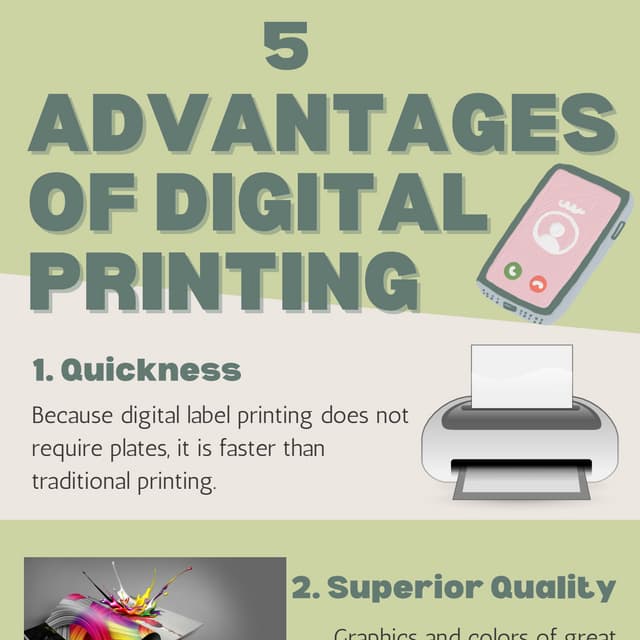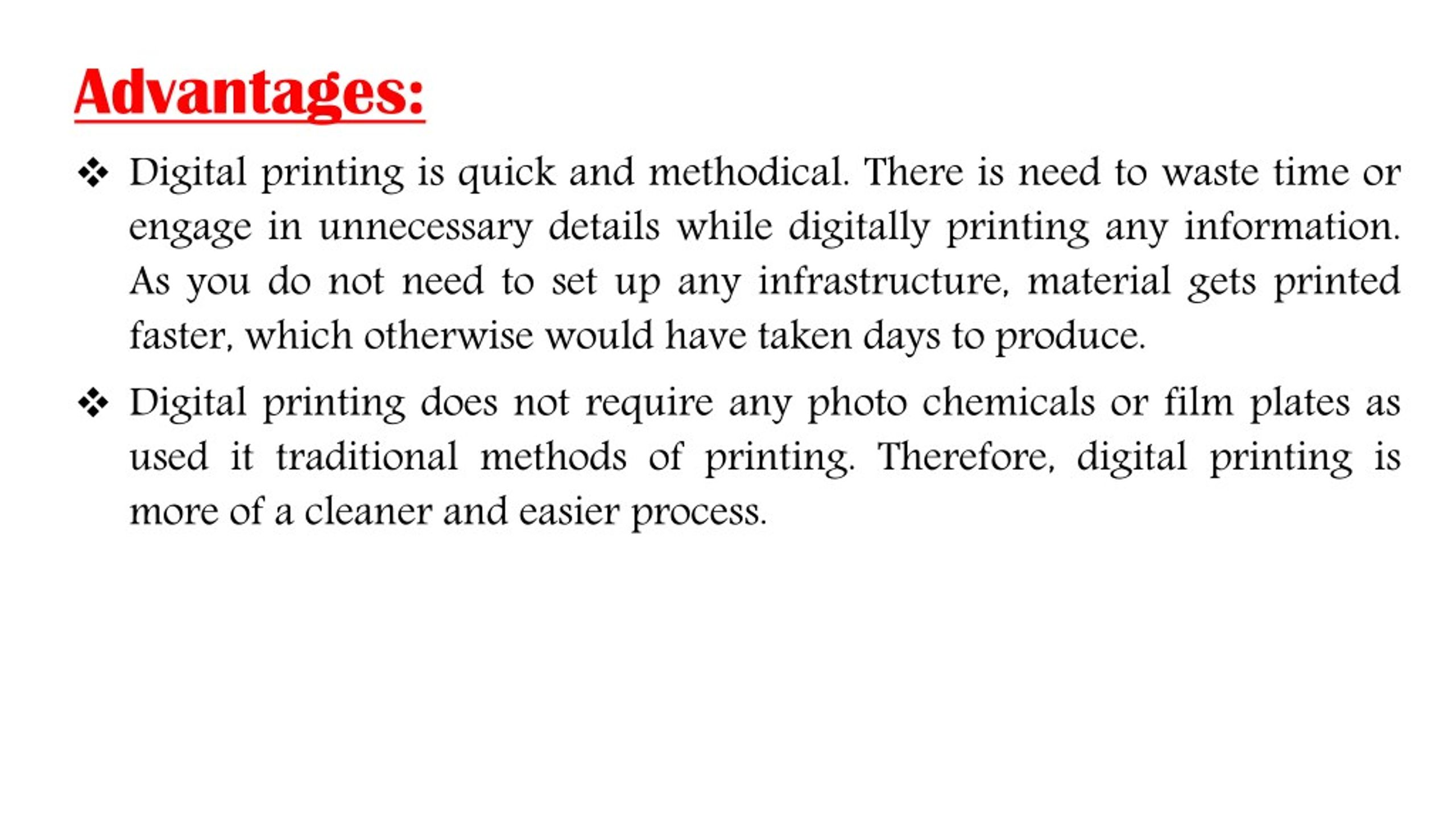A Biased View of Digital Printing
A Biased View of Digital Printing
Blog Article
Digital Printing Things To Know Before You Buy
Table of ContentsSee This Report on Digital PrintingThe Ultimate Guide To Digital PrintingThe smart Trick of Digital Printing That Nobody is DiscussingGetting My Digital Printing To Work9 Easy Facts About Digital Printing DescribedNot known Incorrect Statements About Digital Printing
Variable information printing, such as direct mail with personalized codes and addresses, is preferably suited for digital printing. Digital quick printing only needs 4 steps of design, review, printing and binding to get every little thing done. Digital quick printing has an unparalleled advantage: print on demand.According to PMMI, electronic printing enables brand names and producers to respond rapidly to customer demands while improving the supply chain, minimizing warehousing price and waste, and appreciating faster time to market. That all noises terrific, yet exactly how does this innovation do all that? The major differentiator of these modern technologies is that there are no set-up costs and no plates with digital printing.
Everything about Digital Printing
According to Wikipedia, the best difference in between digital printing and traditional approaches such as lithography, flexography, gravure, or letterpress - Digital Printing is that there is no requirement to replace printing plates in electronic printing, whereas in these analog printing methods home plates are repetitively changed. This leads to quicker turnaround time and reduces cost when making use of digital printing.
Digital printing is extremely versatile, so it's easy to make changes to the package style swiftly. It all goes back to the plates.
With traditional printing approaches, short-run printing is simply not feasible. Due to the fact that an excellent design can make or break your product, digital printing consistently produces high-grade, clear and vibrant graphics each time.
Digital printing is the process of printing digital-based photos directly onto a selection of media substrates. There is no need for a printing plate, unlike with countered printing. Digital documents such as PDFs or desktop computer publishing data can be sent out straight to the digital printing press to print theoretically, picture paper, canvas, material, synthetics, cardstock and various other substrates.
The Buzz on Digital Printing
According to PMMI, electronic printing permits brand names and suppliers to react quickly to consumer demands while improving the supply chain, reducing warehousing cost and waste, and delighting in faster time to market. That all audios terrific, yet how does this modern technology do all that? The major differentiator of these innovations is that there are no set up fees and no plates with digital printing.
This results in quicker turnaround time and lowers price when using digital printing.

Digital Printing Things To Know Before You Get This
More inventory can imply even more waste in the future. With standard printing techniques, short-run printing is just not feasible. Because an excellent layout can make or damage your item, digital printing consistently develops high-quality, clear and vivid graphics each time. Digital printing on adaptable pouches adds the intense, vivid, and accurate graphics that virtually beckon customers to connect and touch them.

According to PMMI, digital printing enables brands and producers to react promptly to customer demands while enhancing the supply chain, minimizing warehousing expense and waste, and delighting in faster time to market. That all noises terrific, but exactly how does this innovation do all that? The major differentiator of these innovations is that there are no set up charges and no plates with digital printing.
Fascination About Digital Printing
According to Wikipedia, the best distinction in between digital printing and traditional methods such as lithography, flexography, gravure, or letterpress is that there is no need to change printing plates in digital printing, whereas in these analog printing methods home plates are repetitively changed. This leads to quicker turn-around time and reduces cost when utilizing electronic printing.
Fast manufacturing means getting your item to market faster. It also indicates it's less complicated and faster to make modifications later on, when you alter a recipe, add a SKU, or develop seasonal product packaging. Digital printing is highly adaptable, so it's very easy to make changes to the plan style rapidly. All of it goes back to home plates.

Unknown Facts About Digital Printing
Digital printing is the process of printing digital-based pictures straight onto a variety of media substrates. There is no requirement for a printing plate, unlike with balanced out printing. Digital data such as PDFs or desktop publishing data can be sent directly to the electronic printing press to print on paper, picture paper, canvas, textile, synthetics, cardstock and various other you can try these out substrates.
Report this page